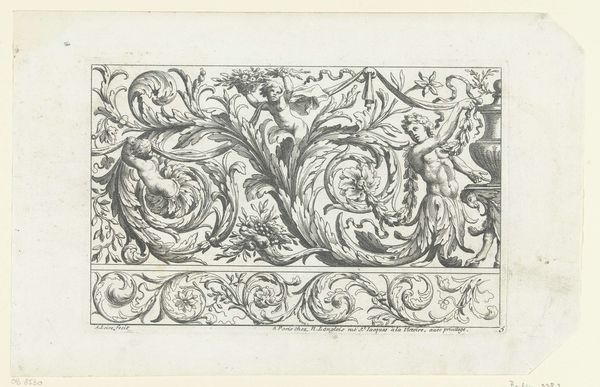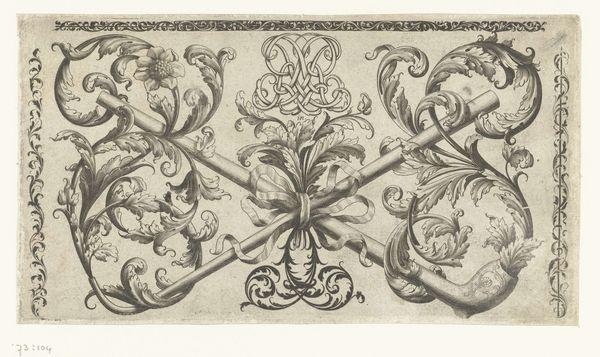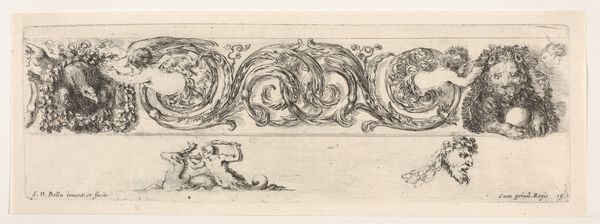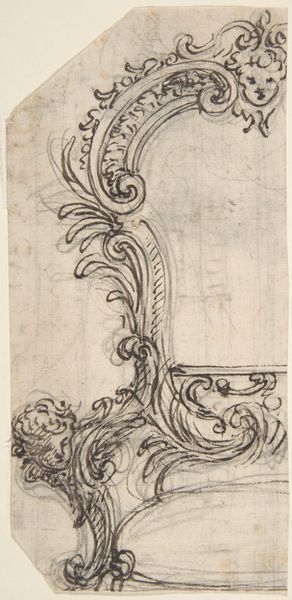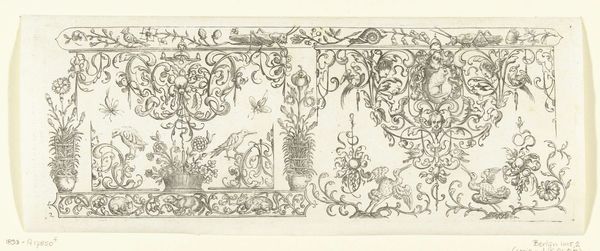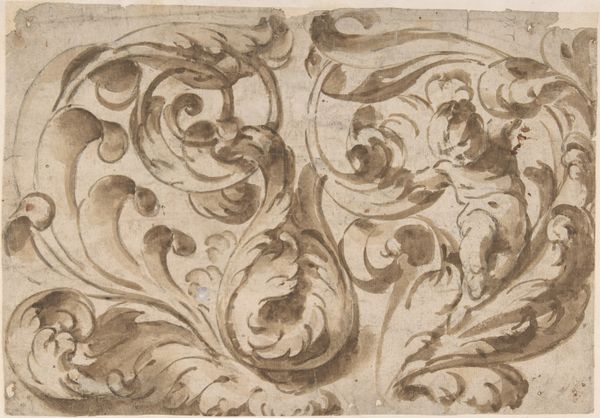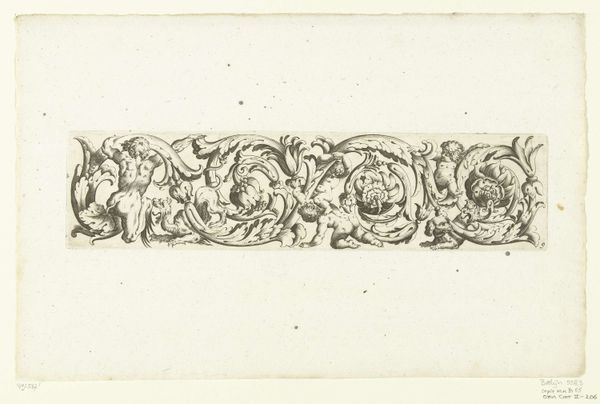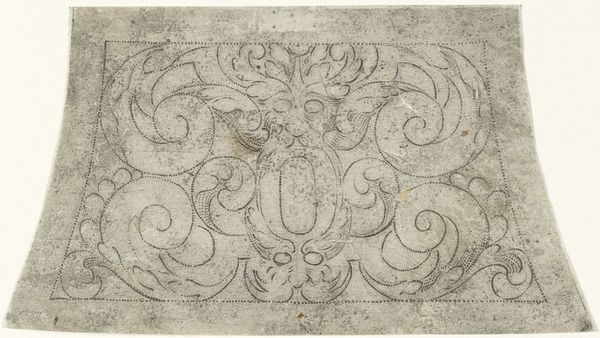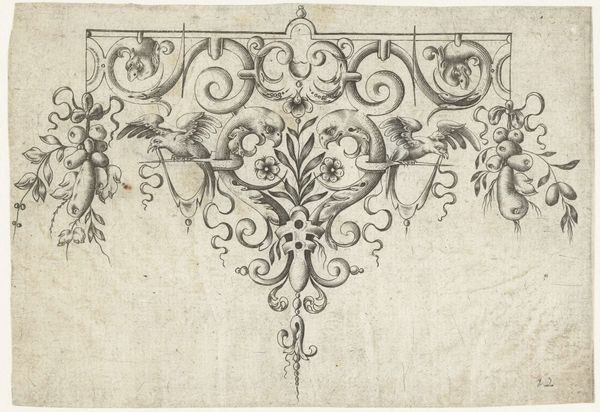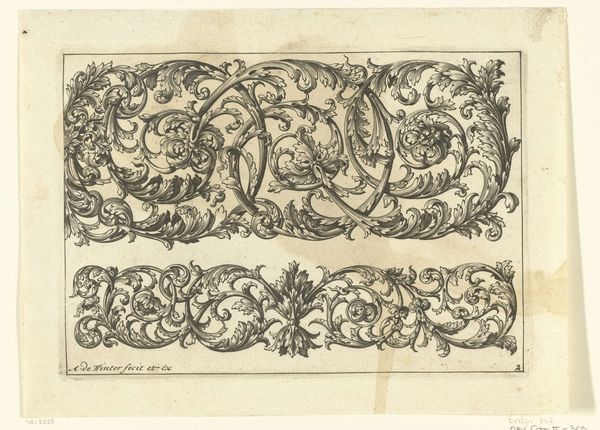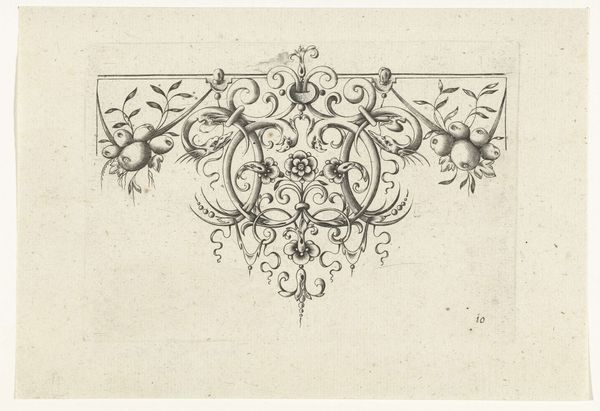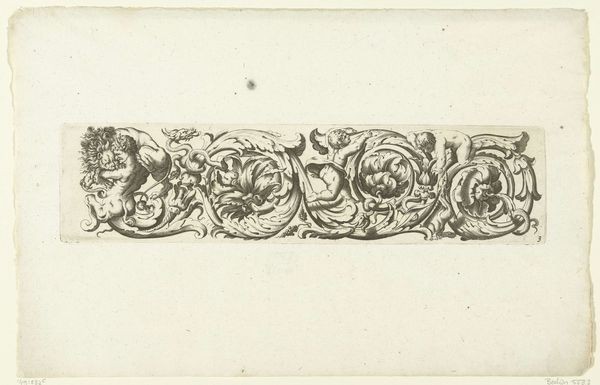
drawing, paper, ink
#
drawing
#
organic
#
art-nouveau
#
pen drawing
#
pen illustration
#
pen sketch
#
paper
#
form
#
personal sketchbook
#
ink
#
ink drawing experimentation
#
pen-ink sketch
#
thin linework
#
line
#
pen work
#
sketchbook drawing
#
decorative-art
#
sketchbook art
Dimensions: height 75 mm, width 185 mm
Copyright: Rijks Museum: Open Domain
Curator: We're looking at "Randwerk" by Gerrit Willem Dijsselhof, made sometime between 1876 and 1901. It’s an ink and pen drawing on paper, part of the Rijksmuseum collection. What are your initial thoughts? Editor: It feels like peering into someone’s botanical daydreams. The contrast between the bold, definite strokes on the right and the fading, almost ethereal sketches on the left... it's like two different worlds coexisting on one page. I love that raw, unfinished energy. Curator: Indeed. Structurally, the division creates a fascinating tension. The right side presents a clear Art Nouveau sensibility, with defined, flowing lines. Whereas the left exposes a preparatory phase, revealing the artistic process itself. Editor: Exactly! The right side is confident, decorative. The left, though... there's a fragility to those faint lines. A vulnerability, even. It makes you wonder what Dijsselhof intended. Was it a study? A finished work left intentionally incomplete? Curator: The incomplete aspect enhances the form versus organic theme. It exemplifies how even seemingly natural forms can be constrained by imposed borders and shapes. Notice how the frame almost feels like a cage to the burgeoning organic forms. Editor: I feel it! The contrast is beautiful and slightly sad, a little imprisoned even, right? What do you think Dijsselhof wanted us to feel in looking at this piece? Curator: I believe he was more concerned with showcasing the dialectic between spontaneous expression and structured design, and, therefore, wanted to guide viewers to a clearer understanding of decorative-arts' compositional elements. The symbolism inherent within these particular florals wasn't the primary goal. Editor: I don’t know. I still think there’s a bit of longing here, this yearning to escape imposed boundaries…it makes the plants on the right somehow all the more poignant, striving despite the frame. It’s hard not to bring a more personal reading to something this raw, you know? Curator: Perhaps. It depends if one focuses on line as boundary versus line as... well, simply line. However, regardless of viewpoint, I will concede, its impact remains powerful due to the materiality of its creation. Editor: It's like he's whispering about the tension between freedom and control. Curator: Ultimately, it serves as a striking example of the artist's journey and the eternal debate of design, doesn’t it? Editor: Absolutely, a conversation frozen in ink. Thanks for helping to unlock it a little further.
Comments
No comments
Be the first to comment and join the conversation on the ultimate creative platform.
